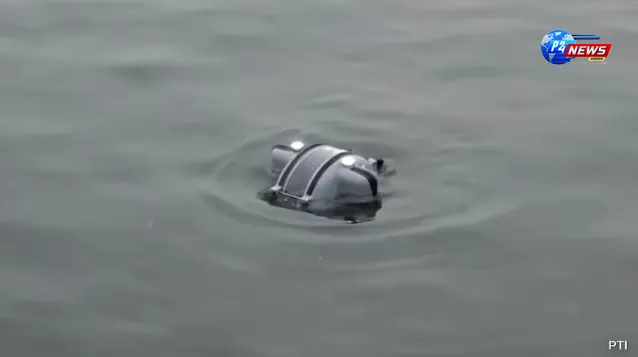These advanced underwater drones are designed for continuous monitoring, boasting exceptional capabilities in low-light environments. Their innovative technology ensures reliable surveillance, making them ideal for various aquatic operations and safety measures.
The forthcoming Maha Kumbh is set to incorporate groundbreaking security protocols, with officials announcing the introduction of drones that have the capability to monitor depths of 100 meters underwater as well as extend their surveillance up to 120 meters in the air. This immense gathering is expected to attract over 45 crore pilgrims, making it one of the most significant religious events globally.
For the first time in Uttar Pradesh's history, underwater drones will be utilized in the Sangam area alongside tethered drones that are making their debut in the skies. This will occur during one of the largest religious assemblies, scheduled between January 13 and February 26, 2025.
The anti-drone system, initially implemented during the consecration ceremony for the Ram Temple in Ayodhya earlier this year, will also be part of the security measures for the Maha Kumbh. The Uttar Pradesh government announced last week that a comprehensive security framework has been established to safeguard each participant during the Sangam Snan, which refers to the sacred bathing at the confluence.
Those underwater drones are poised to offer continuous surveillance capabilities, functioning efficiently even in low-light situations. Capable of descending to depths of up to 100 meters, these drones are designed to relay accurate information under various circumstances, as stated by a police officer involved in the operation.
Recently, Inspector General of Police for the Eastern Zone in Prayagraj, Rajeev Narayan Mishra, introduced a high-speed underwater drone. He highlighted that this advanced drone can dive to 100 meters and send real-time updates to the Integrated Command and Control Center (ICCC). The drone's unlimited operational range allows for consistent monitoring of any suspicious activities occurring beneath the surface, ensuring prompt responses to potential incidents.
Moreover, over 700 boats will be readily available with personnel from the Provincial Armed Constabulary (PAC), National Disaster Response Force (NDRF), and State Disaster Response Force (SDRF) to oversee the waters. To further bolster safety, a major deployment of remote-controlled life buoys will be implemented, as per government reports.
As revealed by a source, the anti-drone system employs radar technology to constantly scan the skies for unidentified aerial objects. In the event of a potential threat, high-resolution optical sensors are activated to assess the type and intent of the drone. If necessary, countermeasures such as jamming radio frequencies can disrupt its navigation, rendering it ineffective. This is especially important to eliminate the risk posed by rogue drones, which may carry dangerous items or surveillance apparatus that threaten public safety.
Tethered drones, on the other hand, provide uninterrupted surveillance without battery constraints due to their connection to a ground-based power source. Equipped with high-definition cameras, these drones relay live footage to the ICCC in the vicinity of the Mela, aiding officials in monitoring crowd dynamics, identifying congestion points, and responding quickly to emergencies.
The operational range of these tethered drones extends beyond the Mela area, covering critical locations such as railway stations, bus terminals, and airports to regulate potential overcrowding. Uttar Pradesh Chief Minister Yogi Adityanath has underscored the importance of employing state-of-the-art technology to ensure both safety and operational effectiveness.
The Chief Minister envisions the Maha Kumbh setting a new global benchmark for safety and security by merging contemporary systems with the traditional ethos of the occasion. The security challenges associated with this monumental gathering cannot be underestimated, according to officials.
In addition to the drone operations, AI-driven cameras will be deployed to analyze crowd patterns, forecast potential congestion, and facilitate real-time headcounts. The integration of facial recognition technology will further strengthen security measures.
As noted by a police officer, these AI systems function as vigilant eyes, enabling authorities to proactively tackle issues before they evolve into larger problems. The tethered drones will not only provide live updates on unauthorized aerial activities but will also pinpoint the location of the operator in terms of exact latitude and longitude.
These tethered drones can ascend up to 120 meters, allowing for aerial observations that can pinpoint crowded areas or locations in need of medical or security attention. Scheduled every 12 years, the Maha Kumbh represents not only a deeply spiritual occasion but also an unparalleled logistical endeavor.
Officials are committed to leaving nothing to chance, emphasizing that with projections of over 40 crore attendees, even a minor oversight could have serious implications.
















Comments 0